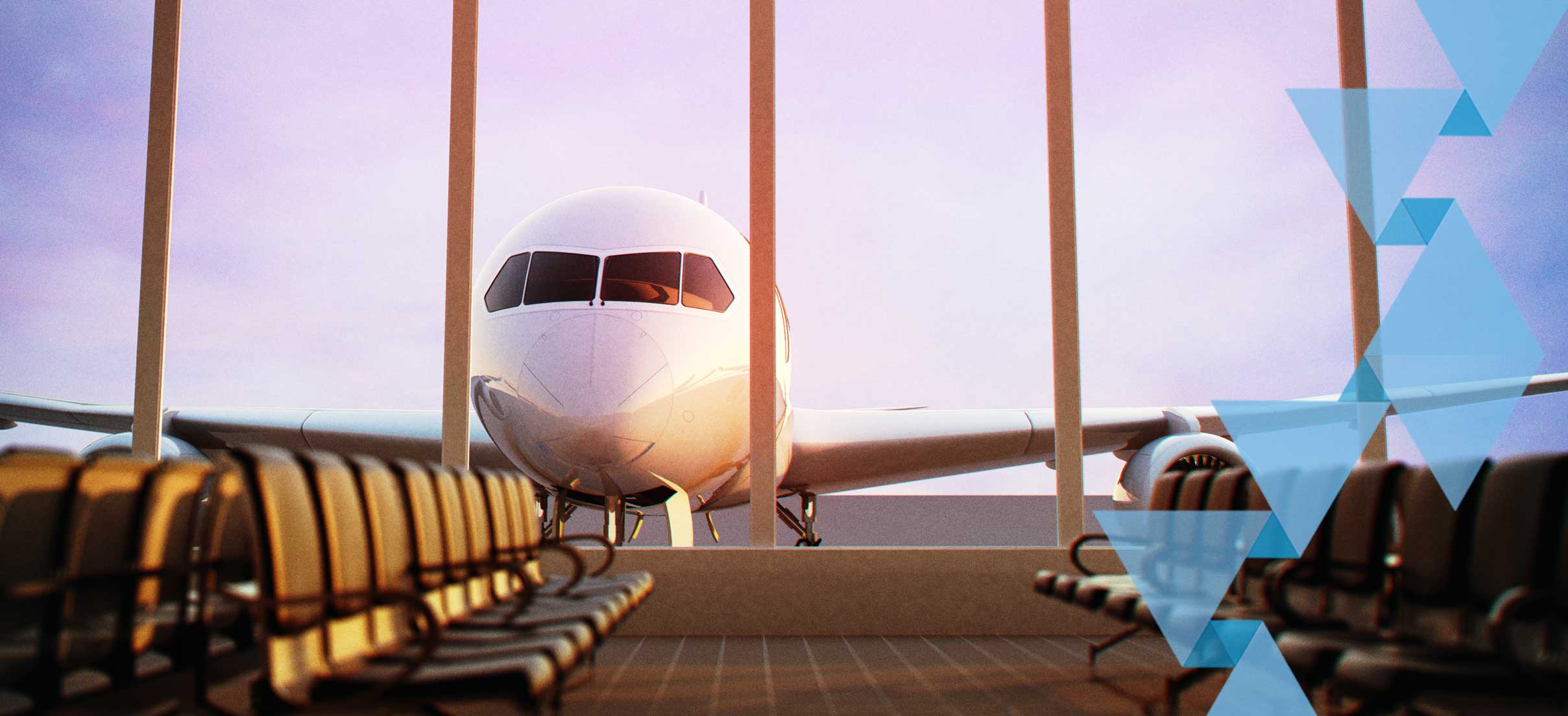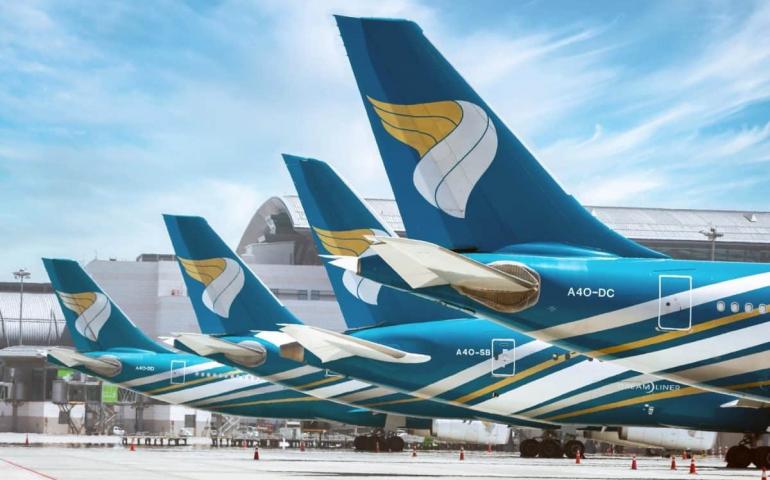
By Carlos Ozores y Rob Walker
There’s been a great deal of speculation about the future of airlines in the aviation recovery process, but what about airports?
Grounded fleets. Stay-at-home orders. Cancelled trips. COVID-19 has upended the aviation industry, and much of the news has focused on the airlines’ plight and associated losses in connectivity and demand—and the massive challenges that stand in the way of a return to pre-pandemic operations. But what about airports? Even though previous aviation crises have impacted airports less dramatically than airlines, the depth and wide-reaching nature of the COVID-19 pandemic makes airports especially vulnerable this time around.
In fact, the effects on many airports will dwarf those of the Great Financial Crisis (GFC) where, (see below) some 30% of airports had not recovered to pre-crisis volumes eight years later.
Emerging from this crisis, we expect to see a structurally different industry reflecting smaller and fewer airlines. Government support, nationalization plans, and new ownership structures are already emerging for some of Europe’s largest carriers including Air France, Alitalia, and Norwegian.
Despite the dramatic dip in volume and the structural changes that are coming, many airports will prosper again, and others will emerge with different route / carrier profiles. But a new market “normal” with fewer carriers will no doubt challenge the long-term viability of certain airports. Airports need to understand where they fit in—and begin to plan for the post-pandemic era.
While there will be a wide range in airport recovery profiles —based on variables such as size and type of traffic— COVID-19 will change the airport landscape in dramatic ways, starting with how investors view them.
Airports may no longer be classified as safe investments
Over the last quarter century, airports have been the darlings of infrastructure investors. These attractive assets carried a similar risk profile to utilities, based on the stable returns driven by GDP-linked traffic and resultant revenue growth. Airports have also benefitted from a fixed cost base and high barriers to entry. Additionally, “building block” economic regulation—prevalent among concessioned airports in Europe—has been thought to provide mitigation to traffic risk as certainty is provided to cost recovery. As a result, investors have been prepared to pay high EBITDA multiples for airport assets (recently between 20 and 30X) and accept equity returns in single figures based on these characteristics. Indeed, investors have obtained similar multiples for airport assets where the growth profile is significantly limited by planning or environmental decisions, or where concessions are expiring in the medium-term (such as Gatwick, Luton, or London City).
This investor view of airport assets has survived several historical reverses (e.g., 9/11, SARS, GFC, etc.) as traffic has always rebounded rapidly. Is the current crisis different?
The near-total fall in traffic levels at all airports is unprecedented. But this crisis has challenged other commonly held beliefs of the airport investment model, such as:
-
Commercial revenue was previously considered to have downside protection. As a landlord, the airport could continue to charge rent to commercial tenants either directly or in the form of minimum guarantees. But this time, tenants have successfully obtained rent holidays, which in some cases results in a higher percentage fall in commercial revenue than traffic.
-
As a tentative recovery commences, airlines are succeeding in negotiating much lower levels of airport charges as they can shop around. Airports such as Nice are waiving passenger fees for the foreseeable future, and regulation appears to be no protection.
-
Although airports have made unprecedented cuts to what has been viewed as a fixed cost base, early indications are that those cost reductions still fall well short of the reduction in volumes.
-
The crisis arises at a time of other challenges to aviation, notably economic recession, and, in the case of Europe, the environmental agenda where growth in aviation may appear incompatible with most European nations’ net zero objectives.
Airport recovery profiles will vary widely
Once travel restrictions and quarantines start to relax, demand for air travel will begin to return, albeit in a phased manner as domestic and some intra-region routes will open before many inter-continental flows.
While past crises provide little guidance on the nature of the current one, they do highlight a wide range in recovery performance across different airports. Given the depth and structural changes expected to occur, some airports should be prepared for a very long path to recovery before returning to 2019’s traffic volumes.
Following the GFC, it typically took European airports at least four years to get back to their pre-crisis levels—and more than 20% of airports had still not recovered even after 10 years. While the aggregate demand picture meant total volumes recovered within three years, it helps to highlight a wide variation in airport performance during the decade following GFC.
Share of Airports Recovering to peak by Year after GFC (European Airports, 388 considered)
Source: ICF Analysis
Even within one market (e.g. the UK), there can be highly divergent recovery profiles, often reflecting a combination of factors including the local catchment, passenger profile, airline performance and type (LCC vs. legacy vs. regional), network, and so on. Newcastle, Liverpool, and East Midlands are examples of airports where traffic had still not recovered by 2019, while airports such as Luton and Edinburgh had seen volumes grow more than 50%.
Long-term viability of some airports will be called into question
UK regionals provide a stark reminder of how quickly airport fortunes can reverse with an airline exit.
Even before the full force of COVID-19 hit the European aviation market, the UK had already experienced another airline insolvency as Flybe went into administration on March 5. Flybe was a large regional carrier focused on connecting the UK regions, and often competed with LCCs, legacy airlines, and surface access options.
Airports such as Belfast City, Southampton, and Exeter were heavily reliant on Flybe for air connectivity providing over 60% of the airport’s capacity. Southampton has already seen carriers such as Eastern, Aurigny, and Logan Air announce new or increased capacity to soften the loss of Flybe, while other airports have seen limited backfilling.
UK Regional Airports exposed to Flybe (Departing Seats, October 2019 vs 2020)
Source: SRS Schedules
For example, airports such as Belfast (BHD) and Southampton that previously catered to around two million passengers per year will need to adapt to the near-term outlook of hundreds of thousands of passengers instead. Meanwhile, other airports with overlapping catchments will also be competing for similar connectivity and some demand may also be lost to other airports, making recovery ever harder.
Longer-term questions will likely emerge over the viability of some of these regional airports, with demand unlikely to return to 2019 levels for some time. Local or government support might be required not only to guarantee the routes, but also the airports that are served.
Performance of airports within a system will vary widely
The UK also provides a glimpse into how secondary airports in multi-airport systems may be affected by the pandemic.
The London aviation market is the largest in the world, made up of six airports with limited available capacity. This is reflected by the premiums airlines have been prepared to pay for access to scarce slots at Heathrow—and more recently other airports in the system.
There is a recognized hierarchy within the London airports evidenced by the growth patterns, as airports have become constrained over time. Heathrow has been full for many years, while Gatwick reached capacity several years ago. This has, in turn, benefited the likes of Luton and Stansted, which have both posted very strong growth rates over the last five-plus years.
It is widely accepted that demand in the London market is unlikely to return to 2019 levels before at least 2023, due to the supply- and demand-side environment. Airlines are planning to emerge from this crisis notably smaller, while the appetite for air travel is likely to remain subdued for some time as confidence returns and companies and people incorporate new ways of working and communicating into their lives.
With reduced demand, airlines are likely to protect their assets (slots) and consolidate operations at their most important bases—Heathrow in the case of British Airways and Virgin Atlantic and Gatwick in the case of easyJet—while cutting capacity at secondary airports (e.g., Virgin Atlantic exiting Gatwick).
While airports may succeed in maintaining overall traffic levels, the mix will change. Heathrow was one of the least impacted airports following the GFC, as airlines maintained connectivity and reduced capacity more significantly elsewhere. Given the implications for long-haul travel taking longer to restart, we should expect a higher share of short-haul traffic and aircraft resulting in reduced throughput and benefits for local environmental issues. There may even be opportunities for new entrants as slots could become available during allocation or through reduced acquisition or lease costs from other carriers seeking to reduce exposure in the market.
Gatwick is expected to see a loss of traffic to Heathrow, but will also be looking to backfill from other carriers seeking market opportunities (such as Wizz Air and others already allocated additional slots from this winter season). But much of the long-haul connectivity that has been built over the last five years with Norwegian and other carriers could be lost.
Other airports may suffer more markedly—easyJet has already announced the closure of its Southend and Stansted bases and further downsizing is expected at Luton. A significant share of the recent growth achieved could be lost for many years.
Beyond London, airline strategies will likely drive a wide range in performance across airports in multi-airport systems and will be played out in other markets throughout the world—New York, Los Angeles, Paris, Sao Paulo, etc.
Airport owners, investors, and operators will need to adapt to a radically changed aviation landscape
The future shape of aviation will reflect sharply reduced demand for many airports, particularly secondary and regional ones, for a considerable amount of time. Where the COVID-19 pandemic has been compounded with airline failures, the route and carrier make-up for many airports is likely to be unrecognizable.
Whether you are an investor, or an operator of a regional or secondary hub airport, the short- and medium-term will present significant challenges, notably:
-
New air service approach: This role will be distinctly different. Pre-COVID-19, you were likely exploring more wishful network opportunities such as long-haul airlines and new strategic markets, while the current climate will require a focus on helping your based carriers rebuild their networks and targeting a potentially different set of markets (especially domestic and short-haul).
-
New operational challenges: Key short-term considerations such as how and when to bring capacity back online, and how to provide new measures to support social distancing where possible, will dominate the operations sphere.
-
Planning/design: Longer term, what demand should airports be planning for and what facilities may they need? Maintaining flexibility will be critical.
-
Revenue challenges: Should airports accept that returning traffic is going to be low or zero yielding in terms of airport charges, whether due to discounting or because of a shift from higher-yielding international traffic to lower-yielding domestic? What is the analytical framework for making decisions on charges rebates and holidays? What is the scope for revising aeronautical charges structures to remove the imbalances between domestic and international aero charges?
Planning for a prosperous and resilient recovery
Despite the many questions and uncertainties that remain, the evidence from our analysis is clear: the airport recovery landscape will be uneven, and there will be a wide range in airport recovery profiles. Some airports will survive, others will not, and some may even thrive in the post-pandemic era. To mitigate impacts and speed the recovery process, airport owners, investors, and operators will need to devise flexible and creative solutions to the near- and medium-term challenges before them. But the dream of travel is still strong, and airports have an essential role to play in the post-COVID-19 world.





Facebook comments